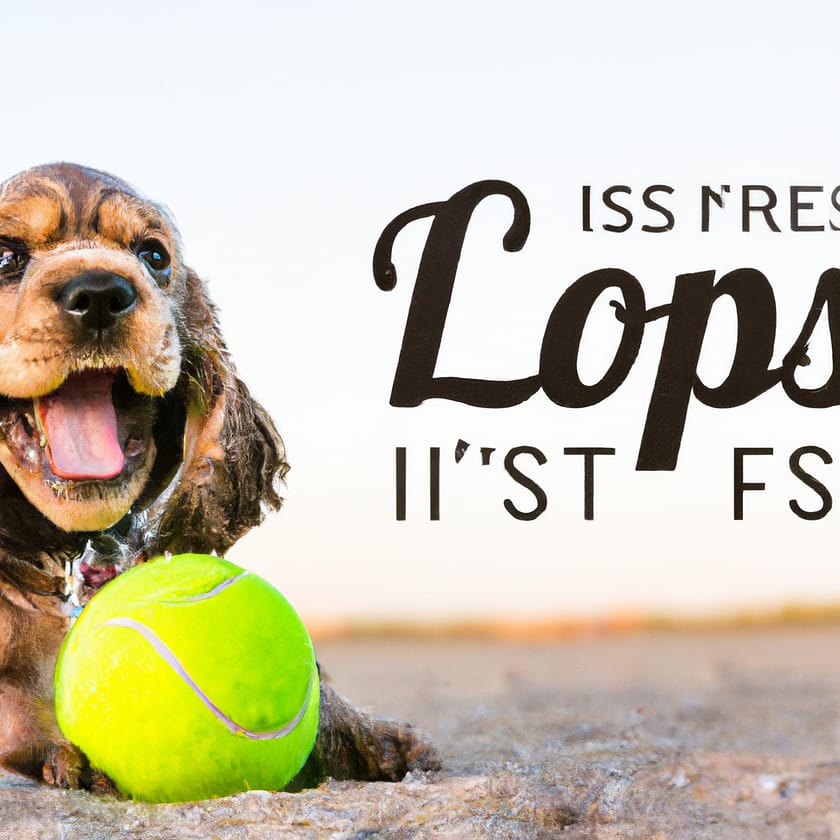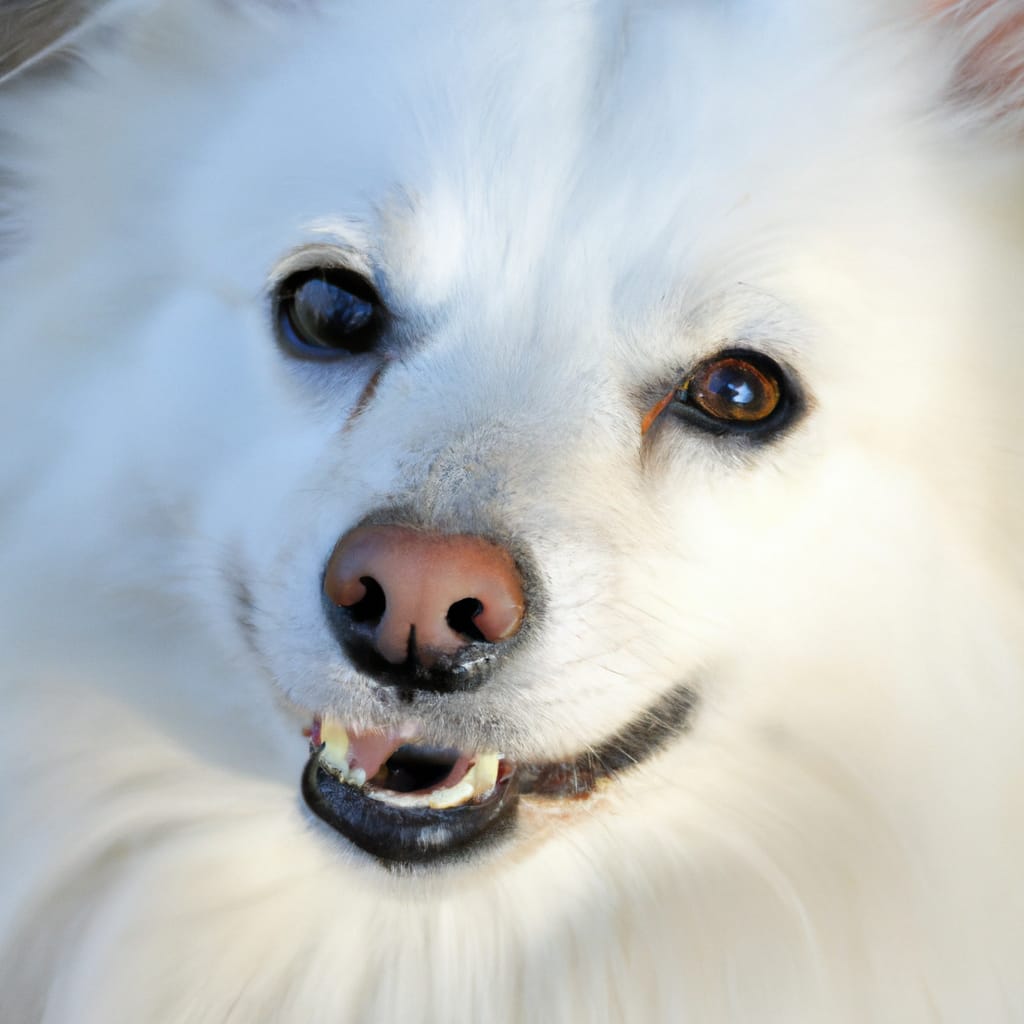Spanador | Cocker Spaniel Lab Mix Dog Breed Information
If you’re looking to bring home a loving, spirited canine companion that combines the best qualities of both Cocker Spaniels and Labrador Retrievers, then the Spanador, also known as the Cocker Spaniel Lab Mix, might just be the perfect breed for you. With its friendly disposition, intelligence, and a wagging tail that never quits, the Spanador is a joy to have in any household. In this article, we will delve into the unique characteristics, care needs, and temperament of the Spanador, giving you all the information you need to know before welcoming one into your home.

Appearance
Size
The Spanador is a medium-sized dog, with an average height of 14 to 20 inches at the shoulder and a weight ranging from 20 to 60 pounds. The exact size of a Spanador can vary depending on the genes inherited from its parents, as it is a mixed breed.
Coat
The Spanador typically has a medium-length, dense, and waterproof coat. It can inherit the characteristics of either parent breed, the Cocker Spaniel or the Labrador Retriever. The coat can be straight or slightly wavy, with a soft texture that is pleasant to touch.
Color
The Spanador can come in a variety of colors, including black, chocolate, tan, or a combination of these. Some Spanadors may have a solid coat color, while others may have markings or spots of different colors. The coat color can vary significantly even within the same litter, due to the diverse genetics of its parent breeds.
Temperament
Personality
The Spanador is known for its friendly and affectionate personality. This mixed breed is generally sociable, outgoing, and eager to please its owners. Spanadors thrive on human company and enjoy being included in family activities. They have a natural desire to make people happy and are often described as being loyal, gentle, and loving companions.
Intelligence
As a mix between two highly intelligent breeds, the Spanador is generally smart and quick to learn. They possess excellent problem-solving skills and are known to display a high level of intelligence. This breed is eager to please its owners, making training a rewarding and enjoyable experience for both parties involved.
Trainability
The Spanador is highly trainable, thanks to its intelligence and willingness to learn. With proper training methods that use positive reinforcement and consistency, this breed can quickly pick up commands and tricks. Obedience training is important to ensure a well-behaved and well-mannered Spanador. They thrive on mental stimulation and are always eager to learn new things, making them ideal candidates for various dog sports and activities.
Health
Common Health Issues
The Spanador is generally a healthy breed, but like all dogs, they are prone to some health issues. Some of the common health problems that Spanadors may experience include ear infections, hip dysplasia, elbow dysplasia, and eye problems. Regular veterinary check-ups, proper nutrition, and adequate exercise can help minimize the risk of these health issues and ensure that your Spanador remains healthy and happy.
Care and Exercise
To keep your Spanador in good health, it is important to provide them with proper care and regular exercise. Regular veterinary check-ups, vaccinations, and parasite prevention are essential. Spanadors require daily exercise to keep them physically and mentally stimulated. Long walks, interactive play sessions, and opportunities to run and play in a safe and secure environment should be incorporated into their daily routine.
Life Expectancy
On average, a Spanador has a lifespan of 10 to 15 years. However, with proper care, attention to their health needs, and a balanced diet, they can live even longer. Regular veterinary care and a healthy lifestyle are key factors in ensuring a long and happy life for your Spanador.
Grooming
Brushing
The Spanador’s coat is relatively low-maintenance and only requires regular brushing to keep it in good condition. Brushing at least once a week helps to remove loose hair, prevent mats and tangles, and keep the coat looking healthy and shiny. Pay special attention to areas prone to matting, such as behind the ears and under the belly.
Bathing
Spanadors do not require frequent bathing unless they get particularly dirty or start to develop an odor. It is generally recommended to bathe them every 2 to 3 months using a gentle dog shampoo to avoid stripping the natural oils from their coat. Regular brushing and wiping with a damp cloth can help keep their coat clean between baths.
Ear Cleaning
Spanadors, especially those with floppy ears inherited from the Cocker Spaniel parent, are prone to ear infections. Regular ear cleaning is essential to prevent the build-up of wax and debris, which can lead to infection. Use a veterinarian-recommended ear cleaner and gently wipe the inside of the ear with a clean cotton pad or cloth.

Feeding
Dietary Needs
To ensure optimal health, it is important to provide your Spanador with a balanced and nutritious diet. High-quality dog food that is appropriate for their age, size, and activity level is recommended. The amount of food to feed your Spanador will depend on their individual needs, which can vary based on factors such as age, metabolism, and overall health.
Feeding Schedule
Divide your Spanador’s daily food intake into two meals to help prevent digestive issues and maintain a consistent feeding schedule. Puppies may require more frequent meals, while adult Spanadors can usually be fed twice a day. It is important to monitor their weight and adjust the portion sizes accordingly to prevent obesity, which can lead to health problems.
Exercise
Activity Level
Spanadors have a moderate to high activity level, which means they enjoy being active and need regular exercise to stay healthy and happy. Daily exercise is important for them to burn off energy, maintain a healthy weight, and prevent boredom-induced behaviors. They are well-suited for active individuals or families who can provide them with plenty of physical and mental stimulation.
Exercise Requirements
Spanadors require a minimum of 30 minutes to 1 hour of exercise per day. This can include activities such as brisk walks, runs, playing fetch, or engaging in interactive games. They also enjoy swimming, as this is a trait inherited from the Labrador Retriever parent breed. Providing them with a variety of exercise options helps keep them physically fit and mentally stimulated.
Training Activities
In addition to regular exercise, Spanadors benefit from training activities that challenge their intelligence and provide mental stimulation. From obedience training to agility courses, these activities engage their minds and help strengthen the bond between you and your furry companion. Consider involving them in activities such as nose work, puzzle toys, or even scent tracking, which tap into their innate abilities.
Training
Basic Commands
Training your Spanador to respond to basic commands is essential for their safety and overall well-being. Teaching commands such as sit, stay, come, and lie down helps establish a foundation of obedience and facilitates better communication between you and your dog. Consistency, positive reinforcement, and patience are key to successful training sessions.
Obedience Training
Obedience training is crucial for a well-behaved Spanador. This breed is intelligent and eager to please, making them fast learners. Positive reinforcement training methods, such as rewards and praise, work best with Spanadors. Consistency, patience, and gentle guidance are essential to help them understand and follow commands consistently.
Socialization
Socializing your Spanador from a young age is important to ensure they grow up to be well-rounded and confident dogs. Expose them to a variety of experiences, environments, people, and other animals in a positive and controlled manner. This helps them develop good social skills, reduces the likelihood of fear or aggression towards unfamiliar situations, and promotes a friendly and sociable temperament.
Living With a Spanador
Suitability for Families
The Spanador is generally well-suited for families of all sizes, including those with children. They are known to be gentle and patient with kids, making them excellent family pets. However, supervision is always recommended, especially when young children interact with any dog to ensure both the child and the dog’s safety.
Compatibility with Other Pets
Spanadors can coexist harmoniously with other pets when properly socialized and introduced. Their friendly and adaptable nature allows them to get along well with other dogs, cats, and even smaller pets such as rabbits or guinea pigs. Early socialization and gradual introductions are essential to ensure a smooth and peaceful coexistence.
Potential Health Issues
Hip Dysplasia
One of the common health issues in Spanadors is hip dysplasia, a condition where the hip joint does not develop properly. Regular exercise, a balanced diet, and maintaining a healthy weight can help reduce the risk of hip dysplasia. If diagnosed early, there are various treatment options available to manage or improve the condition.
Elbow Dysplasia
Elbow dysplasia, a condition affecting the dog’s elbow joint, can also be a potential health issue for Spanadors. Proper nutrition, controlled exercise, and regular veterinary check-ups can help detect and manage this condition if it arises. Consult with your veterinarian for guidance on how to provide the best care for your Spanador.
Eye Problems
Both Cocker Spaniels and Labrador Retrievers are prone to certain eye problems, which means that Spanadors may inherit these issues as well. These can include conditions such as cataracts, progressive retinal atrophy (PRA), or eye infections. Regular vet check-ups and maintaining good eye hygiene are important to detect and address any potential eye problems early.
Finding a Spanador
Adopting from a Shelter
Consider adopting a Spanador from a local animal shelter or rescue organization. Many mixed breed dogs, including Spanadors, can be found in shelters waiting for their forever homes. By choosing to adopt, you can provide a loving home to a dog in need while also experiencing the joy of owning a unique and wonderful companion.
Finding a Responsible Breeder
If you decide to purchase a Spanador from a breeder, it is crucial to find a responsible and reputable breeder. Look for breeders who prioritize the health and well-being of their dogs and can provide information about the parent breeds’ health clearances. A responsible breeder will also allow you to meet the puppy’s parents, provide proper vaccinations and medical records, and offer ongoing support after you bring your new Spanador home.
Cost of a Spanador
The cost of a Spanador can vary depending on factors such as location, breeder reputation, and the quality of the breeding stock. On average, the price for a Spanador puppy from a reputable breeder can range from $500 to $1500. However, do not let price be the sole determinant in your decision. It is important to prioritize the health and well-being of the dog and choose a reputable source for your new furry family member.
In conclusion, the Spanador is a delightful and friendly mixed breed that combines the best traits of the Cocker Spaniel and Labrador Retriever. With their affectionate nature, intelligence, and willingness to please, they make excellent family pets and devoted companions. They require proper care, a balanced diet, regular exercise, and consistent training to thrive and lead a healthy and fulfilling life. Whether adopting from a shelter or finding a responsible breeder, adding a Spanador to your family can bring love, joy, and endless cuddles for many years to come.













